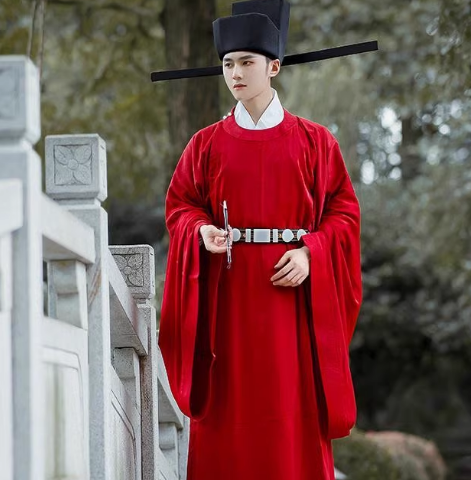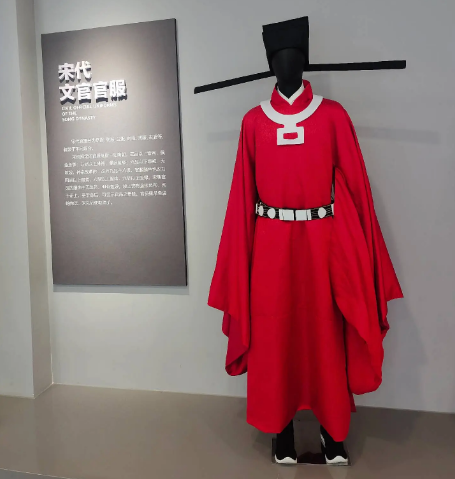Overview of Official Attire in the Song Dynasty
Definition and Significance of Official Clothing
In the Song Dynasty, official clothing transcended mere fashion; it embodied authority and status. Every element, from intricate patterns to fabric quality, vividly represented the wearer’s rank in society. Colors, embroidery, and designs, deeply embedded in traditions, reflected not just aesthetic preferences but also cultural values and the governmental hierarchy of imperial China.
Historical Development of Official Attire During the Song Dynasty
Spanning 960 to 1279 AD, the Song Dynasty experienced a transformative era in official fashion. This period marked a shift from the lavish styles of the Tang Dynasty to more refined and understated clothing. Silk, treasured for its luxurious texture, remained a staple, but its use evolved significantly. Initially, officials adorned loose robes, but gradually, these evolved into more tailored and modest garments, mirroring the era’s evolving ethos. This fashion evolution in the Song Dynasty set a new benchmark in Chinese clothing, emphasizing elegance and subtlety over previous dynasties’ extravagance.
Moreover, these changes in official attire paralleled broader societal transformations. The Song Dynasty was a period of remarkable intellectual and artistic development, and this cultural renaissance influenced all life aspects, including fashion. The progression of clothing styles throughout the dynasty thus reflects the shifting ideals and values of this dynamic period.

Official Attire for Government Officials
Design and Components of Official Robes
Government officials in the Song Dynasty wore robes that were both functional and symbolic. These robes, often made of high-quality silk, showcased intricate designs that denoted the wearer’s position. The upper garment typically had wide sleeves and a round neckline, providing comfort and ease of movement. Additionally, the length and layering of the robes varied, often indicating the wearer’s rank within the government. Fastened with a belt, these robes combined practicality with elegance, reflecting the sophistication of Song Dynasty fashion.
Color and Emblem Significance Based on Rank
The color and emblem on an official’s robe were not just decorative elements but carried significant meaning. Darker colors like black and blue were common, yet higher-ranking officials often had the privilege of wearing brighter colors. For instance, purple and scarlet were reserved for those of the highest ranks. Emblems, such as dragons or other symbolic animals, were intricately woven into the fabric. The number of claws on a dragon, for instance, indicated the official’s rank. These details were not merely aesthetic; they served as visual representations of power and hierarchy within the dynasty’s complex bureaucratic system.
Court Dress for Ceremonial Occasions
Description of Ceremonial Attire
Ceremonial attire in the Song Dynasty court was a spectacle of elegance and grandeur. High-ranking officials and the emperor adorned robes that were far more elaborate than their everyday wear. These garments featured luxurious fabrics like silk, often embellished with gold and silver threads. Vibrant colors like red and purple were predominant, symbolizing wealth and power. The robes were long, sweeping the floor, with wide sleeves that added to their majestic appearance. Often, these outfits were accessorized with ornate hats and belts, enhancing their regal look.
Significance of Ceremonial Dress in Court Rituals
In court rituals, ceremonial dress played a crucial role, signifying respect and adherence to tradition. The specific design and color of the attire were meticulously chosen for different ceremonies, reflecting the event’s importance and the wearer’s role. For instance, during religious ceremonies, the emperor would wear specific colors to honor the deities. The attire was not just clothing but a crucial aspect of the ritual, embodying the dynasty’s cultural values and the solemnity of the occasion.
Military Attire in the Song Dynasty
Distinctive Features of Military Uniforms
Military uniforms in the Song Dynasty were as practical as they were symbolic. Soldiers commonly wore robust, durable clothing designed for battle. The uniforms typically consisted of a sturdy tunic and trousers, often made from hardened leather or thick fabric for protection. Helmets and armor were standard, with metal plates or reinforced materials offering necessary defense against weapons. The colors were usually muted, like browns and greens, to blend with the environment and for strategic purposes. These uniforms also featured badges or insignia, identifying the soldier’s rank and unit.
Differences Between Civil and Military Official Attire
The contrast between military and civil official attire in the Song Dynasty was striking. While civil officials wore robes that symbolized their status and intellectual prowess, military uniforms focused on functionality and protection. Civil attire was often elaborate and made of fine materials like silk, adorned with intricate patterns and vibrant colors. In contrast, military attire was more about utility, constructed from tougher materials to withstand the rigors of battle. This distinction highlighted the different roles and responsibilities of civil officials and military personnel within the Song Dynasty’s societal structure.
Regulations and Enforcement of Dress Codes
Laws Governing Official Attire
In the Song Dynasty, strict laws governed official attire, ensuring a clear visual representation of the social and bureaucratic hierarchy. These laws specified the types of fabrics, colors, and designs suitable for different ranks and occasions. Silk was often reserved for higher-ranking officials, while others wore less luxurious materials. Colors like crimson and purple signified higher status, with specific patterns and motifs indicating the wearer’s exact rank and position. The government meticulously outlined these regulations, reflecting the importance of clothing as a marker of social order.
Consequences of Deviating from Dress Codes
Deviating from the prescribed dress codes in the Song Dynasty carried significant repercussions. Officials found in violation of these sartorial rules faced penalties ranging from fines to demotion, or in severe cases, dismissal from their posts. This strict enforcement underscored the dress code’s importance in maintaining the societal structure and the dignity of official positions. Adherence to these codes was not merely a matter of personal choice but a duty to uphold the values and traditions of the Song Dynasty.
Cultural and Social Implications of Official Clothing
Symbolism in Official Dress
In the Song Dynasty, official clothing was a rich tapestry of symbolism. Every aspect of attire, from the color to the embroidered motifs, conveyed messages about the wearer’s role, rank, and status. For instance, the emperor often featured dragons, a symbol of imperial power, in his attire.The number of claws on the dragon indicated the precise level of authority. Such symbolism reinforced the societal hierarchy, reminding everyone of the wearer’s place within the intricate social structure.

Influence of Official Attire on Social Hierarchy and Identity
Official attire in the Song Dynasty played a pivotal role in shaping social hierarchy and personal identity. Wearing specific robes was a privilege and an indicator of one’s position within the bureaucratic ladder. It was more than just clothing; it was a representation of one’s achievements, capabilities, and social standing. This distinction in clothing fostered a sense of identity among officials, creating an invisible bond that unified members of the same rank, while also distinguishing them from others.







